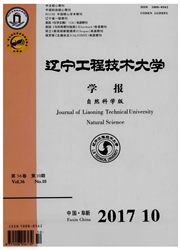

 中文摘要:
中文摘要:
了解极干旱区沙漠过渡带植物的耐盐能力有利于揭示其耐盐机制,保护和利用这些植物。叶绿素荧光技术被使用,以研究NaCl胁迫对温室培养的三种植物骆驼刺(Alhagisparsifolia)、罗布麻(Apocynum venetum)和盐穗木(Halostachyscaspica)幼苗叶片光系统II的影响,NaCl胁迫导致骆驼刺和罗布麻叶片PSII最大量子产量(Fv/Fm)下降,但是引起下降的原因不同——骆驼刺的Fm不变而Fo增加,而罗布麻则是增加初始荧光瓦同时降低最大荧光Fm,盐胁迫对盐穗木影响不大。盐胁迫也诱导了三种植物光适应能力的降低,其中以骆驼刺和罗布麻下降明显。三种植物对NaCl胁迫的忍耐能力排序为盐穗木〉骆驼刺〉罗布麻。
 英文摘要:
英文摘要:
Understanding salt tolerance of plants in the desert transitional zone of the very arid areas is conducive to reveal its salt tolerance mechanism, protect and make use of these plants. Chlorophyll fluorescence technique was adopted to study the effect of Nacl stress on seedling leaves' photosystem II of three greenhouse plants, alhagi sparsifolia, apocynum venetum and halostachys caspica. NaCl stress induced the decrease of the maximum quantum yield (Fv/Fm) of PSII in alhagi sparsifolia and apocynum venetum with various reasons; there is no change of Fm but increase of Fo in alhagi sparsifolia, increase of the beginning fluorescence (Fo) in apocynum venetum and decrease of its maximum Fm at the same time; no effect of NaCl was observed in halostachys caspica. Salt stress induced the decrease of adaptation to light in three plants among which more significant decrease was observed in alhagi sparsifolia and apocynum venetum. Halostachys caspica was the one of maximum salt tolerance, and apocynum venetum the minimum among the three plants.
 同期刊论文项目
同期刊论文项目
 同项目期刊论文
同项目期刊论文
 期刊信息
期刊信息
